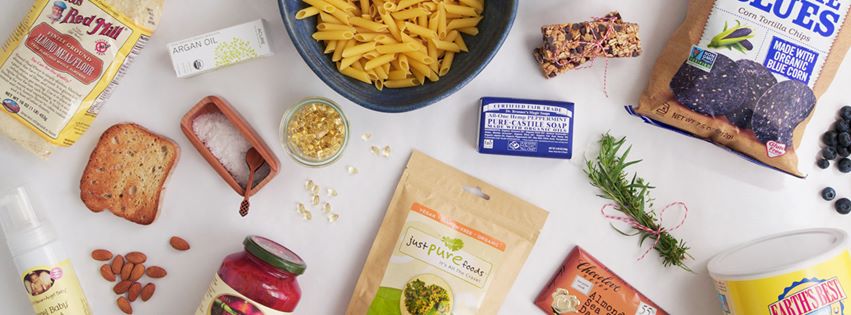Healthy eating is more than a recent trend. It’s a way of living that will pay dividends in the future for people and communities – so why is it so hard to eat healthy? A variety of reasons, relating to price, convenience, and more, make it difficult for the average person to consistently buy healthy foods.
Thrive Market, a new online retailer, aims to bridge all those obstacles. The newly launched website sells more than 2,500 healthy food products, vitamins, home goods, and beauty supplies. Customers pay a membership fee ($59.95) for the benefit of curation and a rough 25-50% discount off retail prices. CEO Gunnar Lovelace says, “Who has time to figure out which of the 25 almond butters to buy.” Thrive Market offers 68 different tags customers can use to filter their item searches, and helps them find the products they are looking for more easily.
Healthy eating just got more convenient, affordable, and educational!
This New Site Will Change The Way You Shop For Healthy Food
by Bari Lieberman
Everyone says a healthy diet is all about balance. That’s why we feel good about dividing our time between ordering takeout and shopping at the farmers’ market. Now, there’s an even better way to shop for better-for-you food.The just-launched Thrive Market is an online retailer with over 2,500 high-quality healthy foods, vitamins, home goods, and beauty supplies. It’s the supplement to your CSA and the partner to your lunchtime Seamless habit. You start by signing up and paying an annual membership fee (as you would at Costco or Sam’s). This fee ($59.95) gives you access to the curated, healthy, non-perishable products that are sold at wholesale prices — roughly 25-50% off retail prices, we’re told. And, for every paying member, Thrive Markets gives a membership to a low-income American family.“We want to be a trusted, curated source that makes healthy living easy, fun, accessible, affordable, and aspirational,” says Gunnar Lovelace, Thrive Market co-founder and CEO. The site is also designed to make finding what you want extra easy, because “Who has time to figure out which of the 25 almond butters to buy,” Lovelace says. We couldn’t agree more. To curate your shopping cart, Thrive offers different “tags” (we counted 68) so you can narrow down products related to your needs and interests, ranging from certified-organic to paleo to peanut-free to fair-trade to produced by woman-owned businesses. “This facilitates finding what you need quickly,” Lovelace adds.The inspiration behind the brand is a personal one for Lovelace: “I grew up with a single mom and saw how hard she worked to make healthy choices,” he tells us. “She later remarried a man who ran a health-food-buying club from an organic farm where we lived in Ojai, California.” This club helped make healthy food more accessible and budget-friendly for Lovelace’s family — a model he wanted to recreate. “I’ve been interested in creating the modern version of a health-food co-op — online, and in a scalable way.” It appears he’s well on his way; a big player in the healthy-living space has invested in the company.
Thrive Markets’ concept of offering accessible, affordable, healthy food has caught the attention of Mark Sisson, (former endurance athlete and well-known author behind Mark’s Daily Apple), who has signed on as a Thrive investor. “It’s an obvious concept that hadn’t yet been done…but which has the potential to become an immense business if executed properly. I believe the Thrive team can do that,” Sisson says. This, combined with the team’s passion to “do good” (as Sisson says) is impressive.
Beyond the attractive prices and social-good aspect, Thrive offers consumers the opportunity to be more empowered by their shopping habits. “Thrive offers a strong education component, which serves to allow people to make informed decisions on healthy goods and services, rather than based strictly on slick marketing,” Sisson says. “Thrive focuses on making healthy living affordable, convenient, and sustainable. Doing so overcomes the elitist stigma (and expensive pricing) that keeps many average families away from the typical health-food store.” Making good food choices just got way easier — and more empowering.



